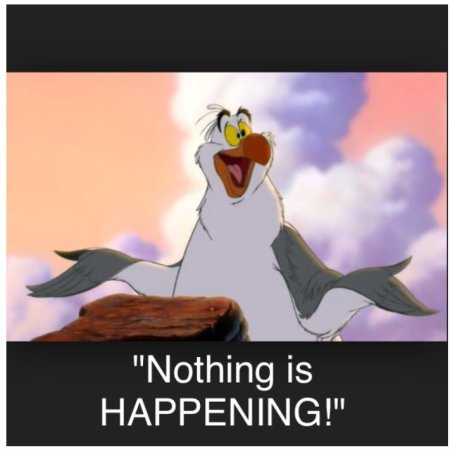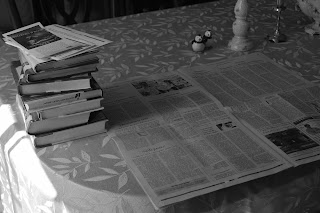Jesus has escaped being stoned twice, and is now on the other side of the Jordan River.
At the start of Chapter 11 we are introduced to Lazarus. What we know is that he is sick and he lives in Bethany. The text identifies Bethany as the village of Mary and her sister Martha. It says Mary is the one who anointed Jesus, but that doesn’t happen until Chapter 12. Lazarus is the brother of this Mary and Martha. All three are really close friends of Jesus.
The sisters send a message to Jesus to let him know that his friend Lazarus is ill. Jesus does not go directly to see Lazarus, because, like the blind man in Chapter 9, this illness “is for God’s glory, so that the Son of God may be glorified through it.”
Jesus then suggests to the disciples that they all trek off to Judea, but the disciples object that the folks in Judea wanted to stone Jesus. Jesus replies with, of course, a metaphor. He says there is light now and so we can walk without stumbling. But those who walk without the light in them will stumble. This refers again to sight and blindness (see Chapter 9) and also recalls the start of the gospel: “The light shines in the darkness” (1:5).
Jesus tells the disciples that he is going to Judea to awaken Lazarus. Jesus is using sleep as a euphemism for death, but the disciples think Jesus is speaking plainly about sleep. Why would they think he is not using a metaphor? Then finally, FINALLY, Jesus speaks without metaphor.
Then Jesus told them plainly, ‘Lazarus is dead. For your sake I am glad I was not there, so that you may believe. But let us go to him.” Thomas, who was called the Twin, said to his fellow disciples, “Let us also go, that we may die with him.” (verses 14-16)
Thomas is often called Doubting Thomas, but he is very loyal to Jesus here. The disciples expect Jesus to die.
Bethany is not too far from Jerusalem. When Jesus & Co get to Bethany, Lazarus has already been dead for four days. A lot of the family and friends are there to comfort the bereaved sisters. Martha goes to meet Jesus, expressing her complete faith in Jesus’ ability to bring Lazarus back to life, and Jesus says Lazarus will rise again. Martha says, well, I know that he will rise “in the resurrection on the last day,” implying that she doesn’t believe Lazarus will rise today. Jesus makes another of the famous “I am” statements in this gospel:
Jesus said to her, “I am the resurrection and the life. Those who believe in me, even though they die will live, and everyone who lives and believes in me will never die.”
This seems to me to be a confirmation of Martha’s statement about “the resurrection on the last day.” He doesn’t really say anything specifically about raising Lazarus now.
Then Martha goes back home and tells her sister Mary that Jesus is approaching. Mary goes out to meet him. Mary is crying and says to Jesus that if he had been there, Lazarus would not have died. Jesus is deeply moved and starts crying too.
Some of the Jews see Jesus’ weeping as a sign of his love for his friend Lazarus. Others are more cynical. They say, Jesus could heal the blind man, so how come he couldn’t stop this man from dying?
Jesus approaches the tomb and tells someone to take away the stone. Mary objects that because Lazarus has been dead for four days it will be incredibly smelly. The stone is removed from the mouth of the tomb-cave. Jesus thanks God out loud, and commands Lazarus to come out of the tomb.
The formerly-dead-now-alive Lazarus exits from the tomb, all covered in burial cloths. Jesus orders the people to take the cloths off and let him go.
What is the reaction of the crowd? The text says some believed in Jesus, but others tattled to the Pharisees, who are deeply troubled. They fear that if the people come to believe in Jesus then the Romans will crack down and destroy their temple and their whole nation. The high priest Caiaphas says nope, the way to go is to have this one man die.
He did not say this on his own, but being high priest that year he prophesied that Jesus was about to die for the nation, and not for the nation only, but to gather into one the dispersed children of God. So from that day on they planned to put him to death. (verses 51-53)
This is very clever of the gospel author. The high priest (who, let’s face it, is the enemy in this gospel) has stated in his own words the salvation theology stated in John 3:17 - “God did not send the Son into the world to condemn the world, but in order that the world might be saved through him.”
The text says that from that day on, the high muckety-mucks plot to kill Jesus (but they have been intending to kill Jesus since Chapter 5). Jesus escapes to the countryside, to a town called Ephraim.
Passover is approaching, which means that huge numbers of people are arriving in Jerusalem. Jesus is the talk of the town. They wonder if Jesus will show up for Passover or not. The high priests and Pharisees get the word out that anyone who knows where Jesus is should tell them so that they can arrest him.
Metaphors: light
Images and themes: death, life, resurrection, one man dying for many
People/Beings: Lazarus and his sisters Mary and Martha, Jesus, the disciples, Thomas, people at the shiva, chief priests and Pharisees, High Priest Caiaphas.
Places: the village of Bethany in Judea, the tomb of Lazarus





